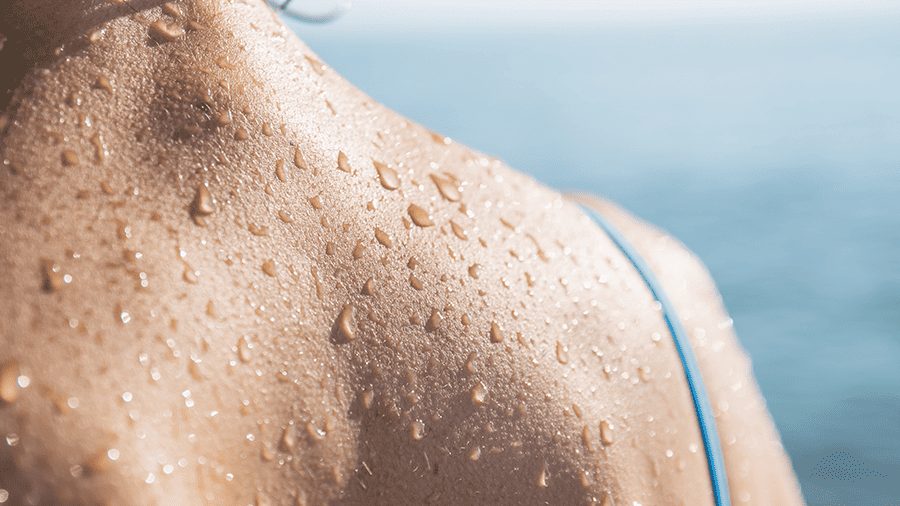Topical Magnesium Absorption

Transdermal Magnesium and Evidence to Support Its Efficacy White Paper by Alison Smith Ph.D. Magnesium is required in over 300 physiological processes in the body and is essential to human health1. Surprisingly, 43% of Canadians and 68% of Americans are not consuming even the minimum daily requirement of magnesium2,3; therefore, supplementation is necessary4,5. There is a breadth of scientific evidence that oral magnesium supplements, containing organic magnesium salts, readily absorb through the intestinal mucosa to become bioavailable in the bloodstream6-10. Oral magnesium supplements, however, are not the only commercially available form of magnesium on the market––transdermal or topical preparations of magnesium are also accessible; although, are they just as effective as oral magnesium supplements in terms of absorbability and bioavailability? Can one simply apply a topical magnesium cream, gel, ointment, or spray, or bathe in water containing magnesium salts and expect to absorb the magnesium through the skin to increase bioavailability within the blood? Göber et al. 11 asserts that transdermal magnesium absorption is a myth. Here we’ll discuss whether this assertion is supported or refuted in the scientific literature. Skin Structure and Permeability The skin is the largest organ of the body12 and functions to provide a robust barrier between the internal body and external environment. Designed primarily to keep harmful substances out and internal structures and moisture within13, the skin is composed of three layers: stratum corneum, epidermis, and dermis12. The strength and seemingly impenetrable nature of the skin is due in part to the stratum corneum––the outer layer of the skin that shields the epidermis14. The stratum corneum is made up of tough keritanized epithelial cells surrounded by layers of lipids (fats). The layers of lipids prevent moisture loss from within the body and block entry of most substances applied to the skin, topically. It is continually renewed and regenerated as the outermost stratum corneum cells slough off from the surface of the skin. Interspersed throughout the stratum corneum are pores (sweat glands) and hair follicles that form passageways that lead directly to the deeper layers of the skin and systemic circulation13. The outstanding questions are whether magnesium can penetrate the stratum corneum or can magnesium enter the bloodstream via the pores or hair follicles. The proceeding sections of this white paper will present all evidence pertaining to transdermal magnesium absorption in hopes of answering these two questions. Scientific Evidence of Transdermal Magnesium Absorption Magnesium is a metallic ion, and there is evidence that metallic ions can penetrate the stratum corneum of the skin15. There are very few studies that have measured blood serum, urine, or intracellular concentration of magnesium following transdermal magnesium application; however, here is a synopsis of the current scientific findings: Transdermal Magnesium in the Treatment of Health Conditions While little quantitative data is currently available to confirm magnesium absorption transdermally, topical magnesium preparations are frequently used by the medical community to successfully treat various medical conditions. Most readers will be aware that transdermal administration of medications is common in the treatment of local skin related conditions and more systemic issues. Applying a medication directly to the skin avoids the breakdown of the medication in the gastrointestinal tract or filtering by the liver––two processes that affect oral medication administration13. Transdermal Magnesium for Ileostomy Complications An ileostomy is a surgical procedure whereby a portion of the ileum (small intestine) is rerouted to an external opening (stoma) on the side of the abdomen and connected to an external bag to allow feces to leave the body. This type of procedure is necessary for those who must have their colon removed for medical reasons20. A high output ileostomy is a common complication of this procedure, which results in a rapid and high yield elimination of waste from the body in 51% of patients, resulting in dehydration, undernutrition, and magnesium deficiency (hypomagnesemia) 20. To treat the magnesium deficiency, ileostomy patients receive intravenous (IV) magnesium infusions rather than oral magnesium supplements since intestinal absorption is compromised. In a study of 6 ileostomy patients, Al Bakir et al. 21 investigated the efficacy of transdermal magnesium to treat ileostomy patients with hypomagnesemia. Results indicated that 50% of patients who received 150 mg of transdermal elemental magnesium per day for 6 weeks increased their serum and urine concentration of magnesium, and one patient was able to cancel their scheduled magnesium IV infusion. Also, 83% of patients reported an improvement or complete resolution of muscle cramping by week two of the study. This pilot study, unfortunately, only included 6 subjects, but it does provide preliminary evidence that transdermal magnesium in an oil-based vehicle can potentially increase the bioavailability of magnesium in ileostomy patients. Topical Magnesium and Psoriatic Arthritis Psoriatic arthritis (PsA) is a chronic inflammatory disease, linked to genetic and environmental influences, which affect the skin and joints. PsA is associated with psoriasis and can cause red, swollen, and scaly skin lesions; nail deformity; swollen, red, and painful fingers; and, inflamed, painful tendon attachments to bone. It is often treated with pharmaceutical interventions22. There is one study by Elkayam et al. 23 that measured the effectiveness of soaking in the Dead Sea on PsA signs and symptoms. (The predominate mineral in the Dead Sea according to Proksch24 is magnesium.) The study divided 42 PsA patients into two groups: both groups soaked in the Dead Sea every day for 4 weeks, while Group 1 received an addition topical application of Dead Sea mud and sulphur baths. Following the 4-week intervention, patients reported a decrease in psoriasis area, severity index (PASI) score, morning stiffness, distance from finger to floor when bending forward, and self-assessment of disease severity. There was also an increase in the Schober test (lumbar spine range of motion) and right and left hand grip. This study did not assess pre and post serum or urinary magnesium levels; therefore, it is difficult to make any conclusions on the effectiveness of magnesium salt exposure from the Dead Sea to increase the bioavailability of magnesium in PsA patients. Transdermal Magnesium and Psoriasis Psoriasis is an autoimmune condition that is characterized by red, scaly skin with raised plaques. Under normal conditions, the outer stratum corneum sloughs off dead skin cells from the


